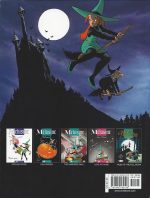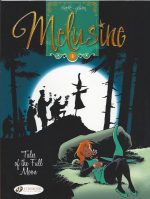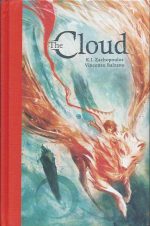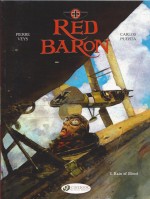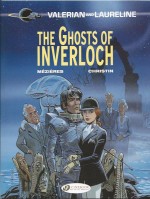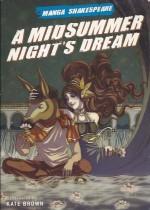
By George Herriman, edited by Bill Blackbeard (Fantagraphics Books)
ISBN: 978-1-60699-364-4
The cartoon strip starring Krazy Kat is unquestionably a pinnacle of graphic innovation, a hugely influential body of work which shaped the early days of the comics industry and became an undisputed treasure of world literature.
Krazy and Ignatz, as it is dubbed in these glorious commemorative collected tomes from Fantagraphics, is a creation which can only be appreciated on its own terms. It developed its own unique language – at once both visual and verbal – and dealt with the immeasurable variety of human experience, foible and peccadilloes with unfaltering warmth and understanding without every offending anybody.
Sadly however it baffled far more than a few…
It was never a strip for dull, slow or unimaginative people who simply won’t or can’t appreciate the complex multilayered verbal and pictorial whimsy, absurdist philosophy or seamless blending of sardonic slapstick with arcane joshing. It is the closest thing to pure poesy that narrative art has ever produced.
Some brief background then: Herriman was already a successful cartoonist and journalist in 1913 when a cat and mouse that had been cropping up in his outrageous domestic comedy strip The Dingbat Family/The Family Upstairs graduated to their own feature. Krazy Kat debuted in William Randolph Hearst’s New York Evening Journal on Oct 28th 1913 and mainly by dint of the publishing magnate’s overpowering direct influence spread throughout his vast stable of papers.
Although Hearst and a host of the period’s artistic and literary intelligentsia (notably but not exclusively e.e. Cummings, Frank Capra, John Alden Carpenter, Gilbert Seldes, Willem de Kooning, H.L. Mencken and Jack Kerouac) adored the strip, many local and regional editors did not; taking every potentially career-ending opportunity to drop it from the comics section.
Eventually the feature found a home in the Arts and Drama section of Hearst’s papers. Protected there by the publisher’s heavy-handed patronage the Kat flourished unharmed by editorial interference and fashion, running generally unmolested until Herriman’s death in April 1944.
The basic premise is simple: Krazy is an effeminate, dreamy, sensitive and romantic feline of indeterminate gender hopelessly in love with Ignatz Mouse: rude crude, brutal, mendacious and thoroughly scurrilous.
Ignatz is muy macho; drinking, stealing, neglecting his wife and children and always responding to Krazy’s genteel advances by smiting the Kat with a well-aimed brick (obtained singly or in bulk from noted local brickmaker Kolin Kelly). A third element completing an animalistic eternal triangle is lawman Offissa Bull Pupp, utterly besotted with Krazy, well aware of the Mouse’s true nature, yet bound by his own amorous timidity and sense of honour from removing his rival for the foolish feline’s affections. Krazy is blithely oblivious of Pupp’s dilemma…
Also populating the ever-mutable stage are a stunning supporting cast of inspired bit players such as deliverer of babies Joe Stork, hobo Bum Bill Bee, unsavoury Don Kiyoti, busybody Pauline Parrot, pompous Walter Cephus Austridge, Chinese mallard Mock Duck, Joe Turtil and a host of other audacious characters – all equally capable of stealing the limelight and even supporting their own features. The exotic quixotic episodes occur in and around the Painted Desert environs of Coconino (based of the artist’s vacation retreat Coconino County Arizona) where the surreal playfulness and fluid ambiguity of the flora and landscape are perhaps the most important member of the cast.
The strips are a masterful mélange of unique experimental art, strongly referencing Navajo art forms and utilising sheer unbridled imagination and delightfully expressive language: alliterative, phonetically and even onomatopoeically joyous with a compelling musical force (“He’s simpfilly wondafilâ€, “A fowl konspirissy – is it pussible?†or “I nevva seen such a great power to kookooâ€).
Yet for all that, the adventures are poetic, satirical, timely, timeless, bittersweet, self-referential, fourth-wall bending, eerie, idiosyncratic astonishingly hilarious escapades encompassing every aspect of humour from painfully punning shaggy dog stories to riotous slapstick.
There have been an absolute wealth of Krazy Kat collections since the late 1970s when the fondly remembered strip was generally rediscovered by a far more accepting audience and this particular compendium continues a complete year-by-year series begun by Eclipse and picked up by Fantagraphics when the former ceased trading in 1992. This specific and fabulous monochrome volume – A Kind, Benevolent and Amiable Brick – re-presents the years 1919-1921 in a reassuringly big and hefty (231 x 15 x 305 mm) softcover edition.
Within this magical atlas of another land and time the unending drama plays out as usual, but with some intriguing diversions, such as recurring tribute’s to Kipling’s “Just So Stories†as we discover how the Kookoo Klock works, why bananas hang around in bunches and why Lightning Bugs light up.
Joe’s natal missions go increasingly awry, disease, despair and dearth of alcoholic imbibements take their toll in the years of Prohibition, the weather thinks it’s a comedian and the value of the common brick rollercoasters from low to high and back again.
We also meet a few trans-species alternates of our triangular stars and even peer into the misty past to see Kwin Kleopatra Kat and Marcatonni Maus whilst exploring the ever-changing seasons in a constant display of visual virtuosity and verbal verve…
Frontloading Added Value to the romantic tribulations are fascinating articles and background features such as ‘A Mouse by any Other Name: Krazy and Ignatz’s Early Life Under the Stairs’ by Bill Blackbeard, intimate photo portraits and the mesmerisingly informative ‘Geo. Herriman’s Los Angeles’ by Bob Callahan.
At the far end of the tome you can enjoy some full-colour archival illustration and another batch of erudite and instructional ‘Ignatz Mouse Debaffler Pages’, providing pertinent facts, snippets of contextual history and necessary notes for the young and potentially perplexed…
Herriman’s epochal classic is a remarkable one-off: in all the arenas of Art and Literature there has never been anything like these comic strips which have shaped our industry and creators, inspired auteurs in fields as disparate as prose fiction, film, dance, animation and music whilst delivering delight and delectation to generations of wonder-starved fans.
If however, you are one of Them and not Us, or if you actually haven’t experienced the gleeful graphic assault on the sensorium, mental equilibrium and emotional lexicon carefully thrown together by George Herriman from the dawn of the 20th century until the dog days of World War II, this glorious compendium is the most accessible way to do so. Don’t waste the opportunity…
© 2011 Fantagraphics Books. All rights reserved.




